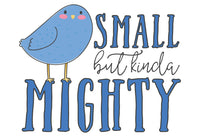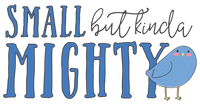Teaching self regulation to kids (for parents and educators)
If you're a parent or educator who wants to teach and foster self regulation skills in children, then this post and the accompanying resources are for you. Here's my latest video on this topic:
Step one focuses on telling and reading stories. This is probably the best strategy for teaching human beings anything because stories are something we are all hard wired to respond to.
In my blog post and video on helping kids cope with change and transitions, I shared Luna’s story, Grumpy Moon. An additional resource included in the Grumpy Moon package is a social narrative called “What should we do when we feel overwhelmed?”
Social narratives (sometimes referred to as social stories but that’s a trademarked term) are a way to help teach skills and concepts to kids in a story-based format.
“What should we do when we feel overwhelmed?” walks both you and your kids through three stages for safely dealing with feelings of stress, anxiety and overwhelm.
Visual supports
As I outline in the video, visual supports are a key part of the success of the three-step process of teaching self regulation and lots of them are included in the Grumpy Moon package. But here's a few suggestions for how parents can easily make their own visual supports:
- Choiceworks app. In Luna's story I used the Choiceworks Calendar app to create a visual calendar to help Luna cope more successfully with planned changes. The original Choiceworks app is specifically designed to help manage anxiety, stress and overwhelm using visual supports.
- Smarty Symbols offers a subscription based service which parents may find worth investing in if they plan to create a lot of visual supports for home use.
- Google images. Of course if you only need access to a few images for personal use you can find images you need online.
- If you want to print out any images and ensure they survive lots of use, you may find this post from the Be a Teaching Unicorn Facebook page helpful (picture used here with permission). I don't have a laminator - I use self laminating paper.

AAC (Augmentative and Alternative Communication)
I'm going to write a bit more about AAC separately but I mention it here for two reasons:
- Low-tech visual supports are most definitely a form of AAC but shouldn't be restricted to only those with a communication disability - AAC is helpful for everyone regardless of ability or age.
- The AAC app you saw me using in the video is the one my non-speaking son Owen currently uses to communicate - LAMP Words for Life.
October is AAC awareness month and also #Stimtober - stay tuned for posts and videos outlining how crucial AAC and stimming are for helping children self-regulate.




Leave a comment